We may earn revenue from the products available on this page and participate in affiliate programs. Learn More ›
It’s been a few years since we’ve seen a new micro red dot from Vortex, but that’s not because they’ve given up on the category. They’ve quietly been at work designing a new red dot, the Defender CCW. It’s built around the Shield RMS footprint and has a much larger window than the Viper and Venom red dots. Vortex says they’ve improved the durability over those old models too.
I’m not one to take a company’s claim at face value. That’s why I’ve been putting a Defender CCW through my own tests over the last month. Not only have I been shooting my Defender CCW on my M&P 2.0, I’ve also bashed, submerged, and, yes, dropped the CCW on concrete. I also talked to Rob Morell, Vortex’s director of product development, to learn more about the new optic and what went into designing it. After that due diligence, here’s what I think of the new Vortex Defender CCW.
- Dot Sizes: 3 and 6 MOA
- Footprint: Shield RMS
- Weight: .95 ounces
- Battery: CR1632
- Battery Life: One year +
- Length: 1.6 inches (measured)
- Width: 1 inch (measured)
- Height: 1 inch (measured)
- Window Size: .8-inch wide x .65-inch tall (measured)
- The brightness setting can be locked
- Includes Picatinny mount
- Includes 1-degree shim plate
- Includes optic cover
- IPX7 waterproof rating
- Vortex VIP Warranty
Footprint and Mounting
The CCW uses a Shield RMS footprint, which is one of the most common for compact and subcompact pistols. The Shield RMS footprint is typically cross-compatible with several other optics footprints, like the Shield RMSc, Holosun K, Sig Romeo Zero, JP Enterprises JPoint, and Leupold DeltaPoint Pro. I say “typically” because tolerances can vary between firearm manufacturers.
My CCW is riding on an optics-ready M&P 2.0 Metal using the #2 adapter plate for the DeltaPoint and JPoint. I’ve also successfully mounted my CCW on a Sig XMacro cut for the Romeo Zero.
Vortex makes mounting the optic easy by providing six different types of screws that will fit nearly every optics-ready firearm. They give you four of each type. Each screw has blue Loctite on it, so all you have to do is pick the right screw and torque them down to 15-inch pounds. If you’re mounting the CCW on top of a scope or zeroing at a close range, you can install the included 1-degree shim plate for more adjustment range.
Battery
The Vortex CCW has a top-loading battery compartment and uses a CR1632 battery. There’s a tool included for unscrewing the battery cap, but you can also use a flathead screwdriver in a pinch.
Some dots are picky about batteries and flicker due to poor contact. “We designed the electronics, so they’re battery agnostic,” Morell says. That means you can run just about any brand’s CR1632, and it will fit with good contact.
ShockShield
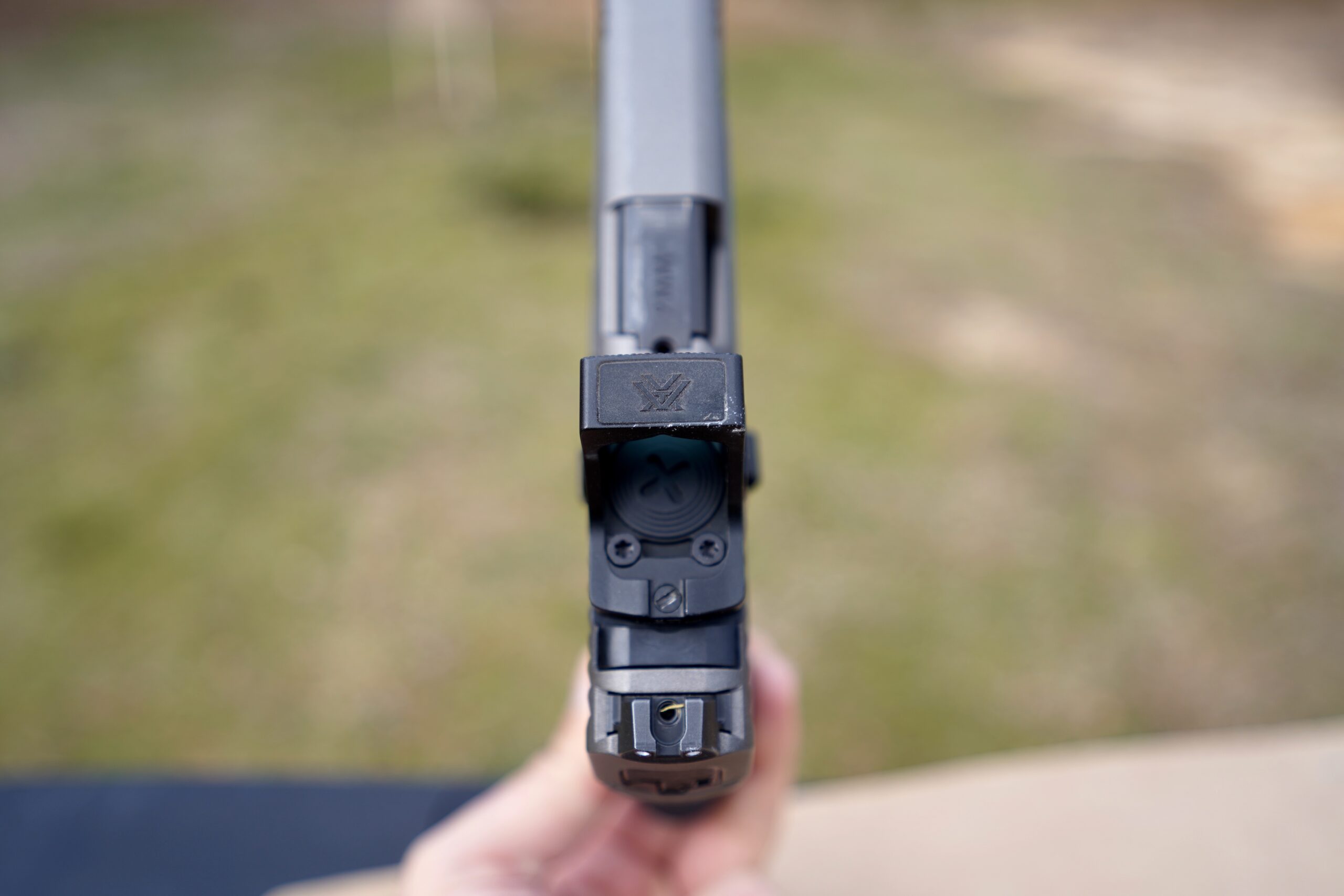
On the top of the red dot, there’s rubber material with the Vortex logo on it. That’s a polymer insert, which is designed to absorb shock and make the optic more durable. “It might seem like a gimmicky feature, but it’s actually extremely beneficial. We found that if we changed the durometer or geometry that it actually affected the impact strength,” Morell says.
Fast Rack
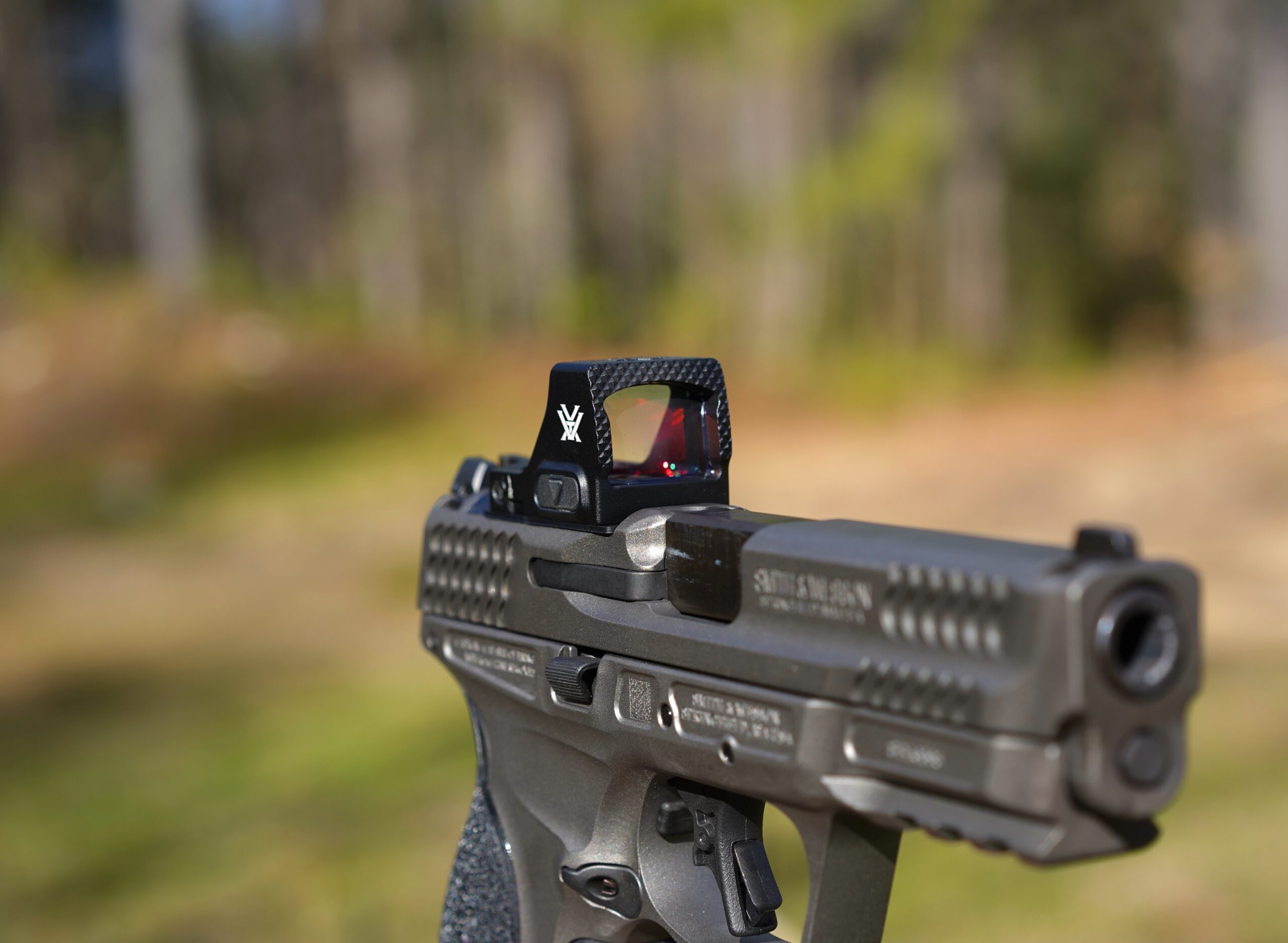
The front of the CCW is aggressively textured, which Vortex is calling Fast Rack. Aside from looking cool, it adds more grip for racking the slide with the front of the optic.
Auto Shut Off and Motion Activation
If left on and motionless for 14 hours, the CCW will automatically power down and power back on when it senses motion. You can turn that feature off by shutting off the red dot manually.
Material
The Defender CCW is made from 7075 aluminum. “We did a lot of different material selection tests to find the optimal material. We found 7075 has some better impact characteristics than 6061,” Morell says.
Read Next: The Best Pistol Red Dots
Testing the Defender CCW at the Range
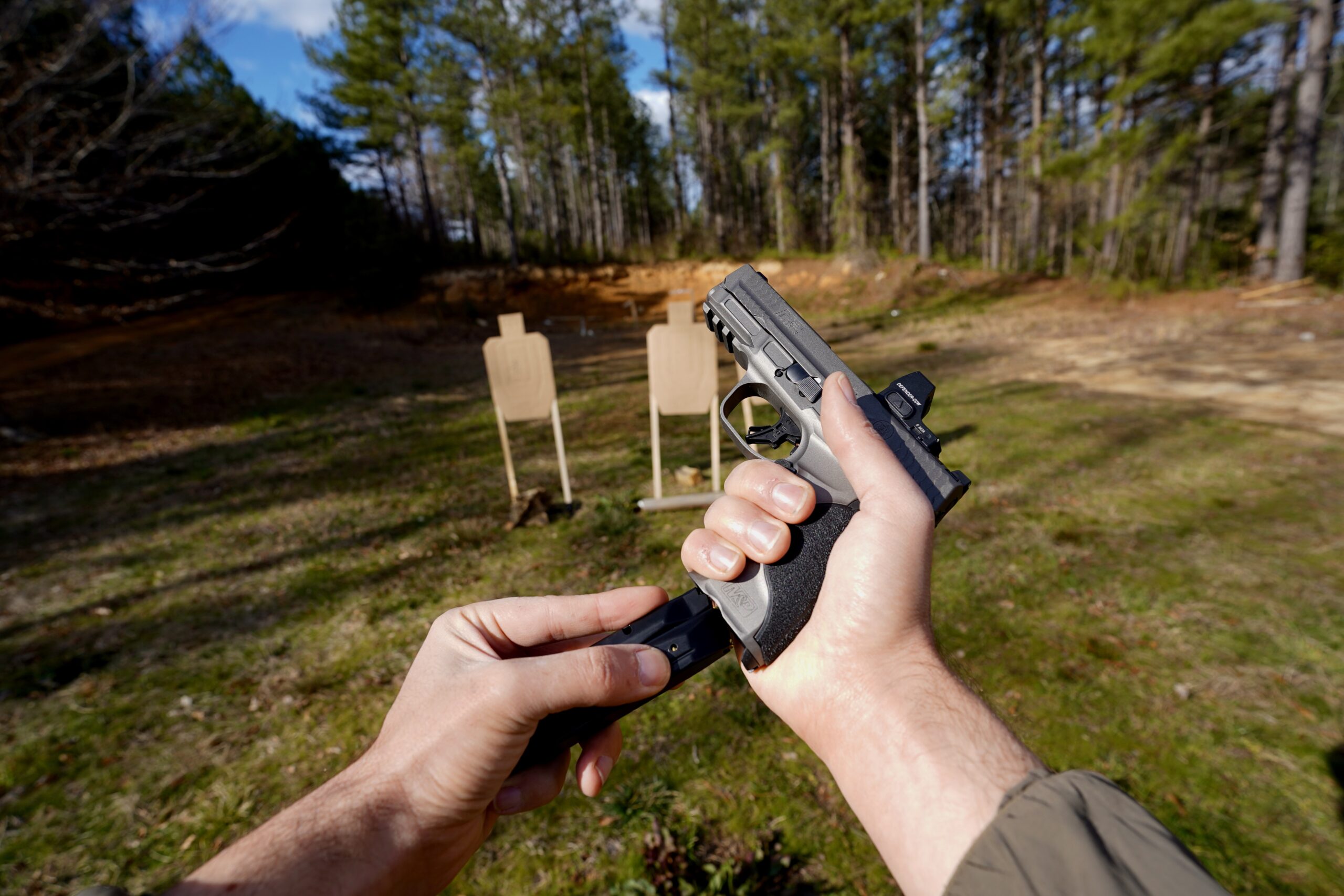
Zeroing the CCW at 15 yards took five shots. Despite the adjustment screws having just barely tactile and inaudible clicks.
I immediately proceeded to bash the front of the optic against the bench a dozen times. I loaded the gun and rechecked zero—it held. At 500 rounds, I once again bashed the front of the optic a dozen times and checked zero. At 1,000 rounds, I went back to hitting the front of the optic, but I didn’t go straight to checking zero this time.
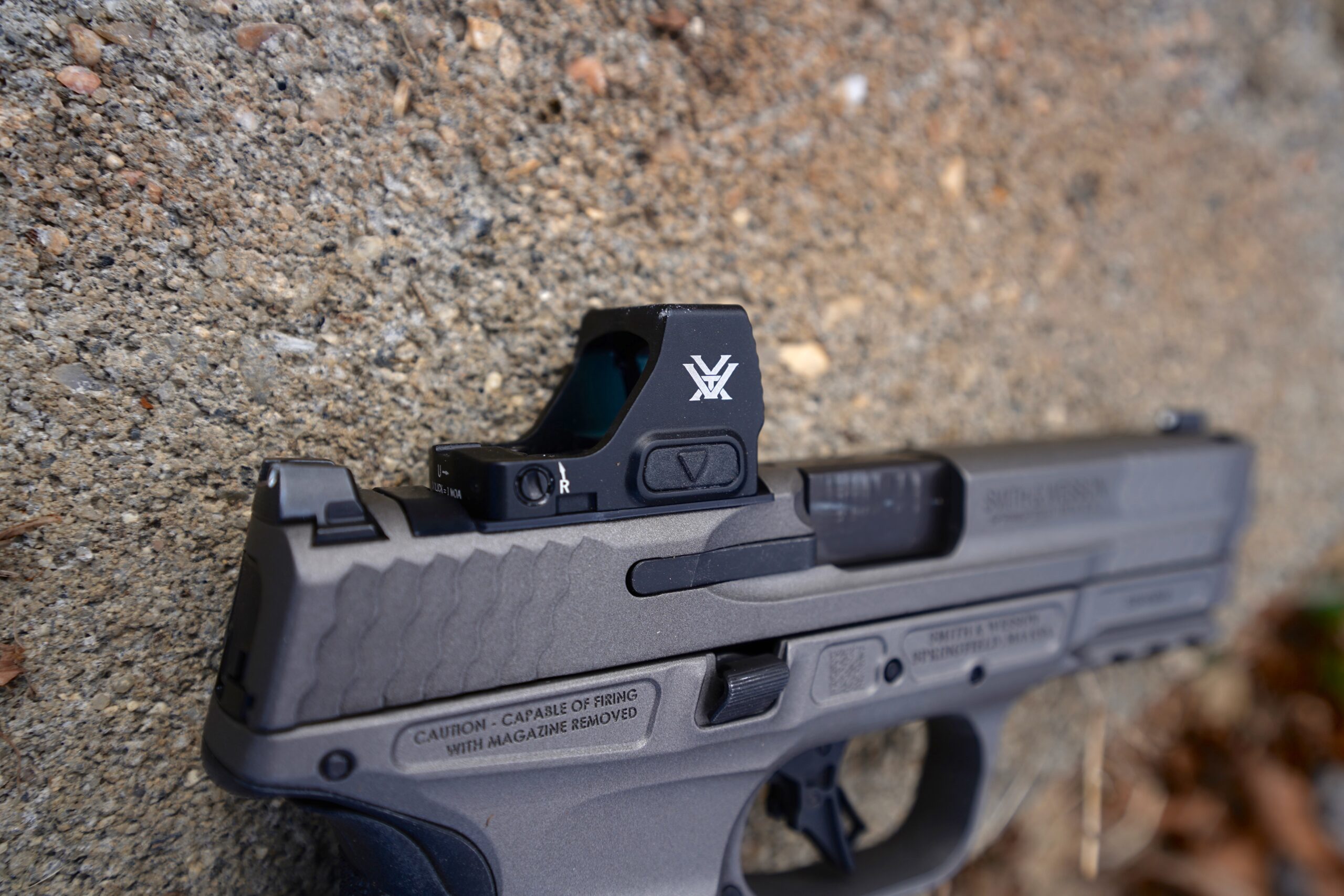
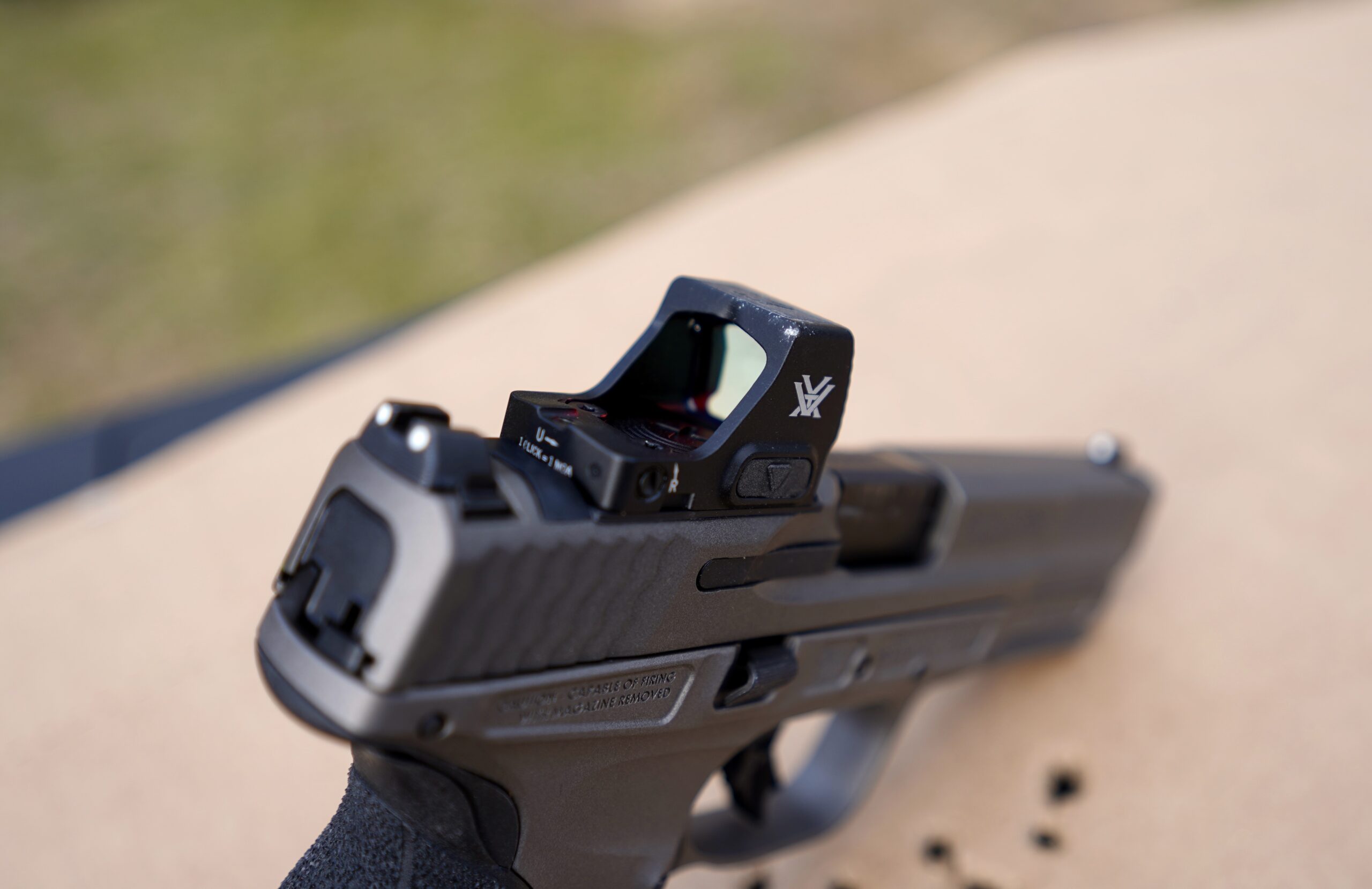
I dropped the unloaded M&P 2.0 All Metal, weighing 30 ounces, optic down onto a concrete paver from chest height. I picked up the gun, checked for damage, and then checked zero at 15 yards. Not only did the CCW have no damage, it also held zero.
The CCW is IPX7 rated, which means it can stay submerged at 1 meter for 30 minutes. I dropped a CCW in a glass of water on my desk and left it there for a day, and it’s still running strong after the 24-hour submersion. That tells me the battery compartment seal does an excellent job of keeping dust and moisture out. Vortex added drainage holes that allow water to flow from the top of the optic out the bottom, so if you’re shooting in a downpour, water won’t pool on the optic.
That testing series gave me a confidence boost for the optic’s long-term reliability and ability to withstand hard impacts. I asked Morell about the durability testing Vortex did on the CCW, and he says they did a full range of experiments using different geometries and materials to find the most durable combination. “We wanted this thing to withstand a drop on a loaded firearm,” Morell says. They used a Glock 19 loaded with inert ammunition and dropped it from 6 feet onto concrete. “That was the test we did that led us to all the different design iterations until we landed on one that we were confident would do it and do it repeatedly,” Morell says.
Most people won’t drop their optic onto concrete, but we will all hopefully put a lot of rounds on them. That’s why Vortex tests for round count too.
“I bet we have over 100,000 rounds of effective recoil testing on these. So, in addition to the drop durability, we have a lot of confidence in the entire electronics and mechanical design. We have some folks that we’ve given these out to for extended testing, and they have north of 40,000 rounds on them and they’re still running strong,” Morell says.
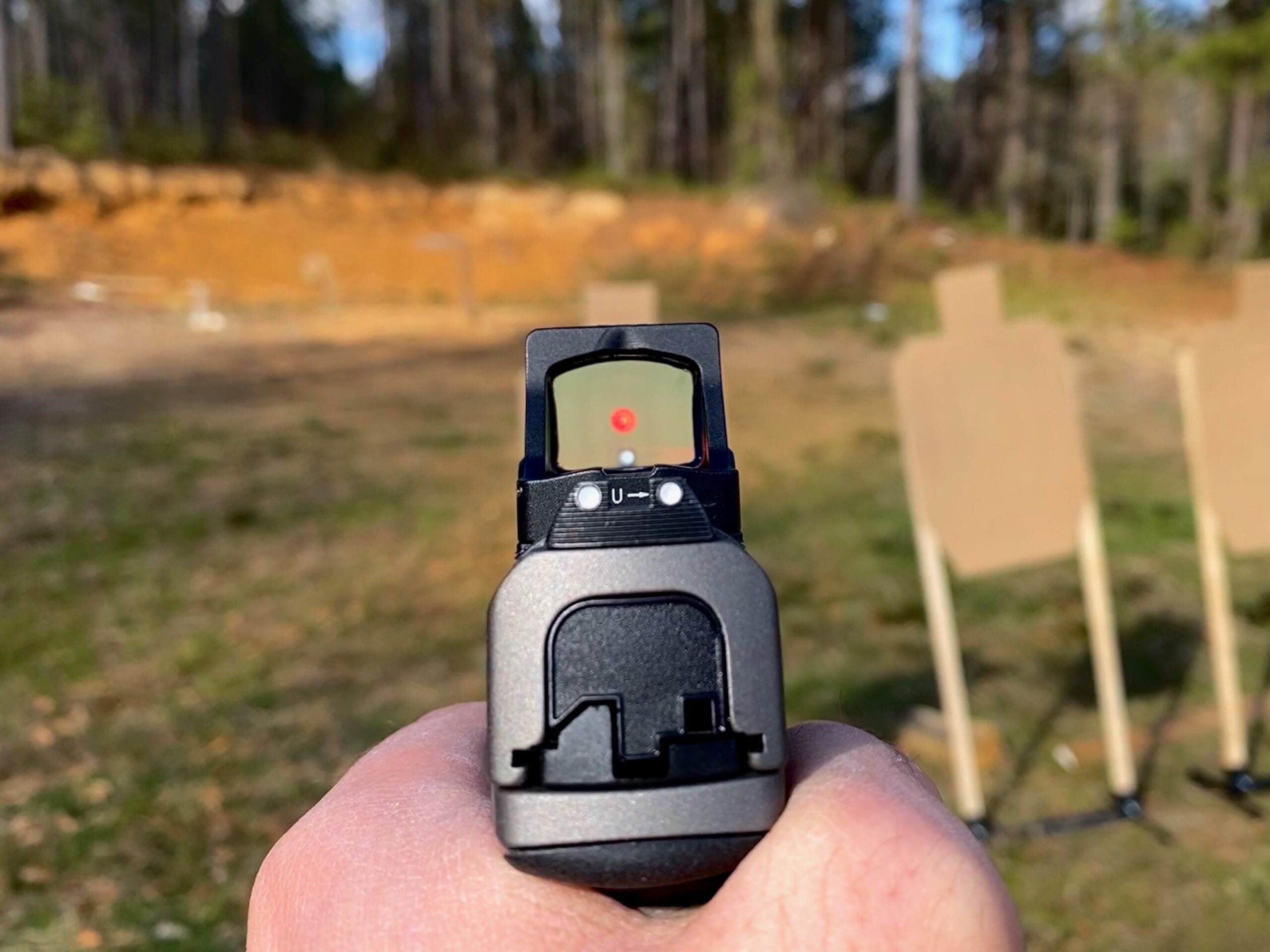
Some optics have a blue hue to the glass, which is done to extend battery life. “When you see a blue lens coating, that’s complimentary to a red notch filter. The blue helps reflect the red emitter better, which then leads to better battery life,” Morell says. Vortex decided to give the CCW less blue hue at the cost of battery life. I think it was the right call. I really liked that I had nothing to distract me from focusing on the target and dot while shooting.
My CCW has a round and crisp dot that doesn’t starburst until I have it set way too bright. Morell says that a round dot is the product of a quality emitter and lens. “If you have a high-quality lens, but a poor emitter, you’re inherently limited by that poor emitter shape,” he says.
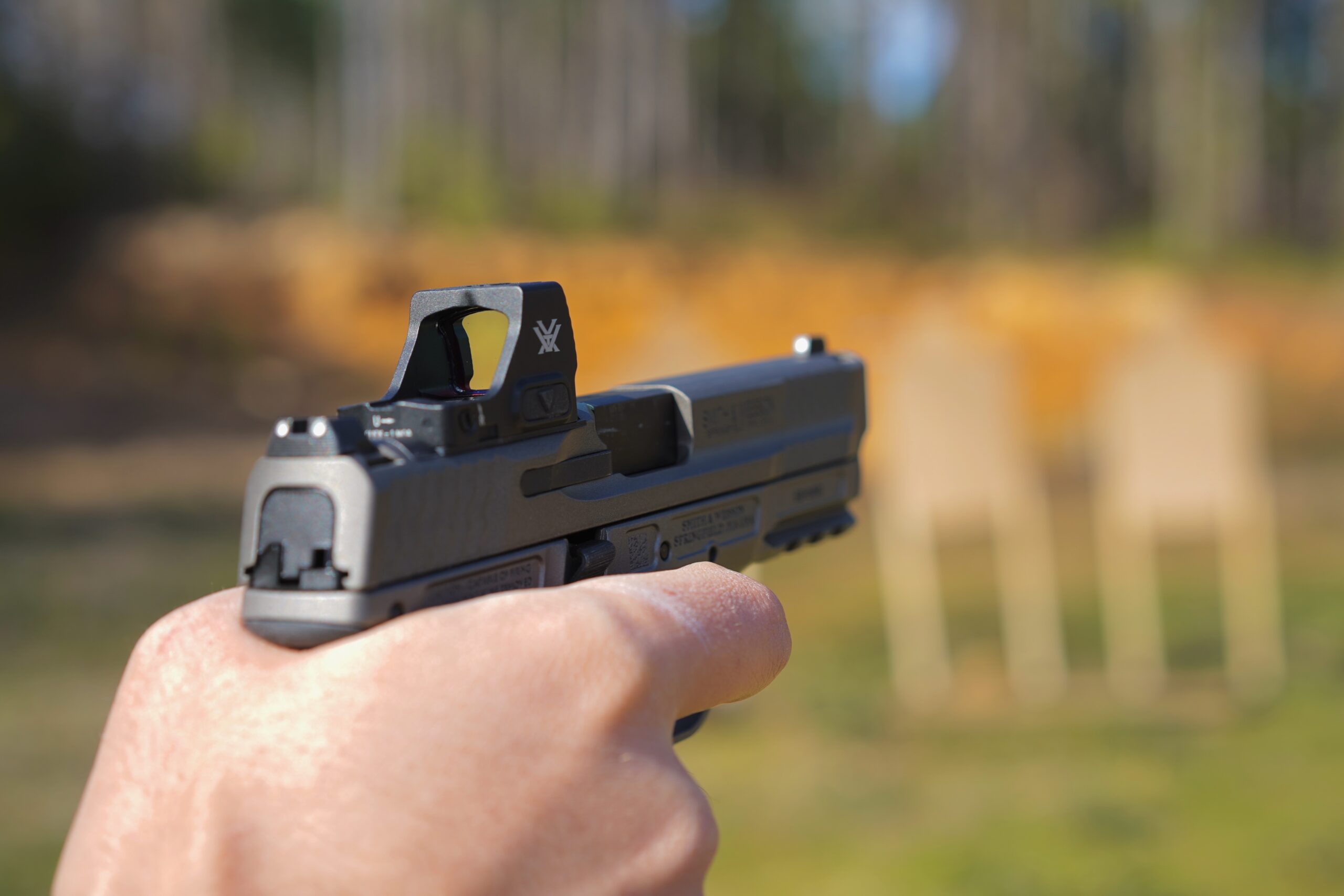
I shot my CCW in a variety of lighting conditions, including directly facing the setting sun, and the dot was bright enough in every scenario. The adjustment buttons are split—up on the left and down on the right. The buttons are large and have a nice click when you press them. I found it really easy to use my support hand thumb to quickly bump up the brightness as morning turned to midday.
I carried the CCW daily for the last month, and I also shot over a thousand rounds of live-fire drills and put in hours of dry-fire practice. That time with the optic made me appreciate the window size on the CCW. It’s a great goldilocks size that’s low profile enough for concealed carry and big enough for fast shooting. I measured the window size at .8-inch wide and .65-inch tall. That puts it very close to my RMR Type 2, which measures .9-inch wide and .6-inch tall.
What It Does Best
Vortex nailed all the things I want in micro red dot: it’s bright, the battery is easy to change, it uses a common footprint, the dot is perfectly round, the glass has no distortion, and it has been reliable.
Where It Can Improve
The Vortex Defender CCW’s unrefined adjustments leave you guessing on how much you’ve moved the sight. Clicks you could feel or hear, would improve the sight-in process.
There’s a case that just a one year battery life is negligible when you have the ease of a top-loading battery. But I’d still like the piece of mind that an extremely long battery life provides.
The Defender CCW is made in China. Whether it’s American manufacturing pride, improved quality control, or avoiding supply chain issues, there are advantages to making a product on home soil. Of course, that would also come with a significant price increase.
Final Thoughts
Micro red dots are deceivingly simple, but within these tiny optics, there’s a lot of engineering to make them function. The reciprocating mass of a pistol slide exerts violent forces on a slide-mounted red dot, and it’s a challenge to make an optic that can soak up thousands of rounds. Then there’s all the subtle nuances that separate an OK red dot from one of the best like: a distortion-free window, easy battery replacement, long battery life, and a bright, crisp dot.
Morell says they went through 15 design iterations before finding one they were happy with. The reason they tried so many different designs and materials was for durability. I’ve tested the CCW for durability, and Vortex did extensive testing. But I’m still holding my applause because the best red dots have a proven track record with years of reliable service over thousands of units. The Defender CCW isn’t there yet, simply due to the fact that it was just released. But, if my sample size of one is any indication, I think it’s going to be an excellent option for concealed carry.
